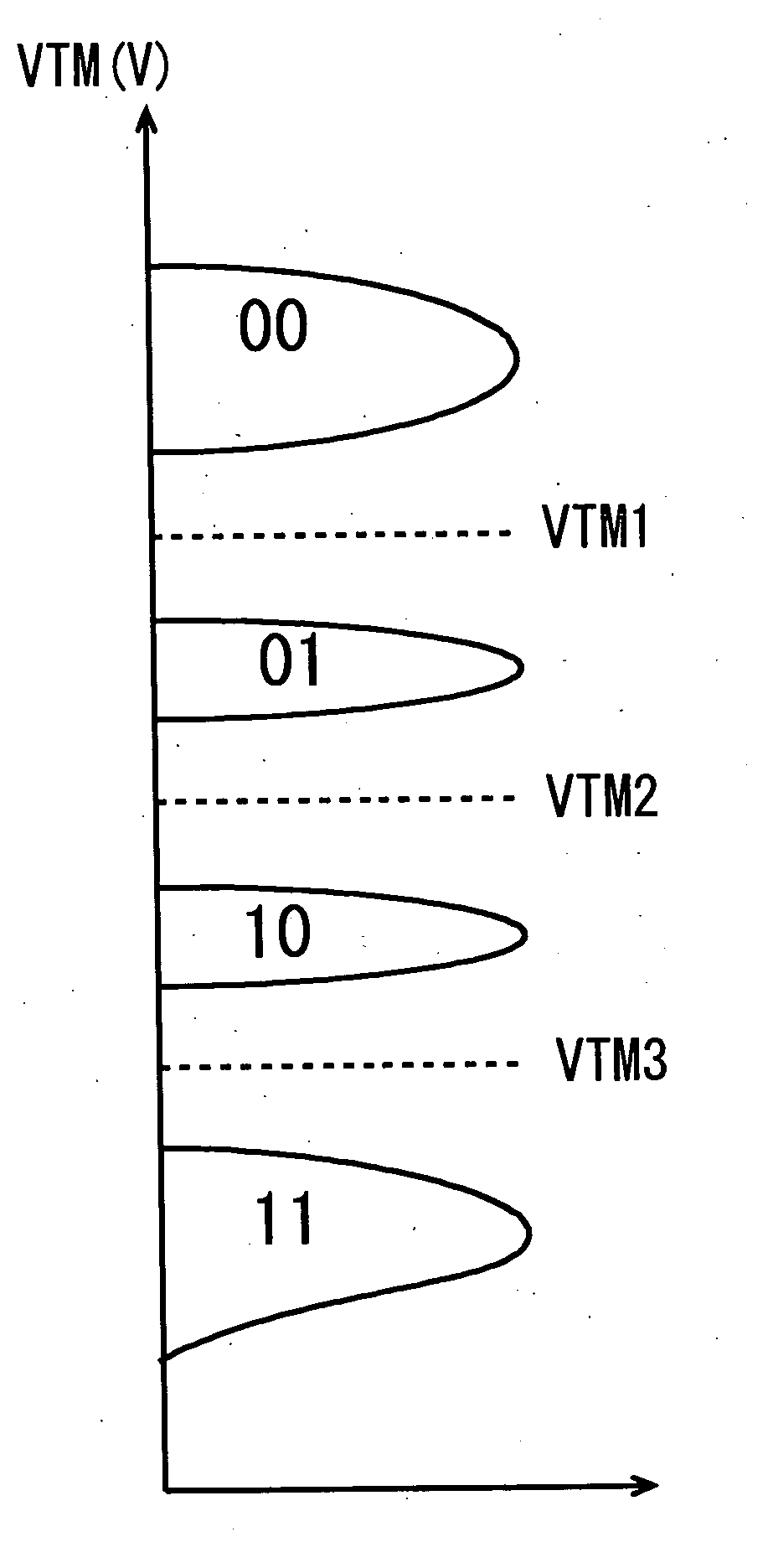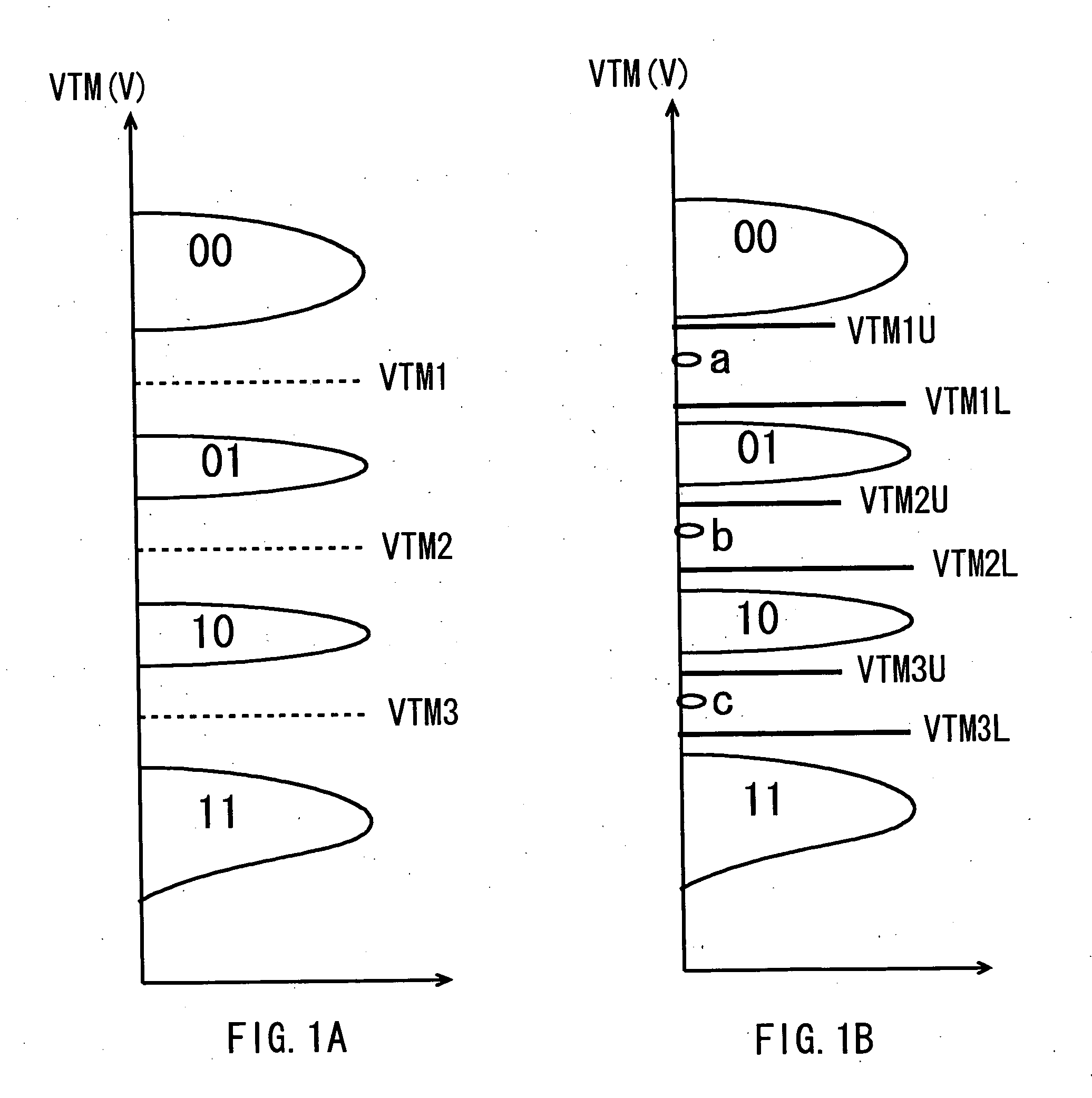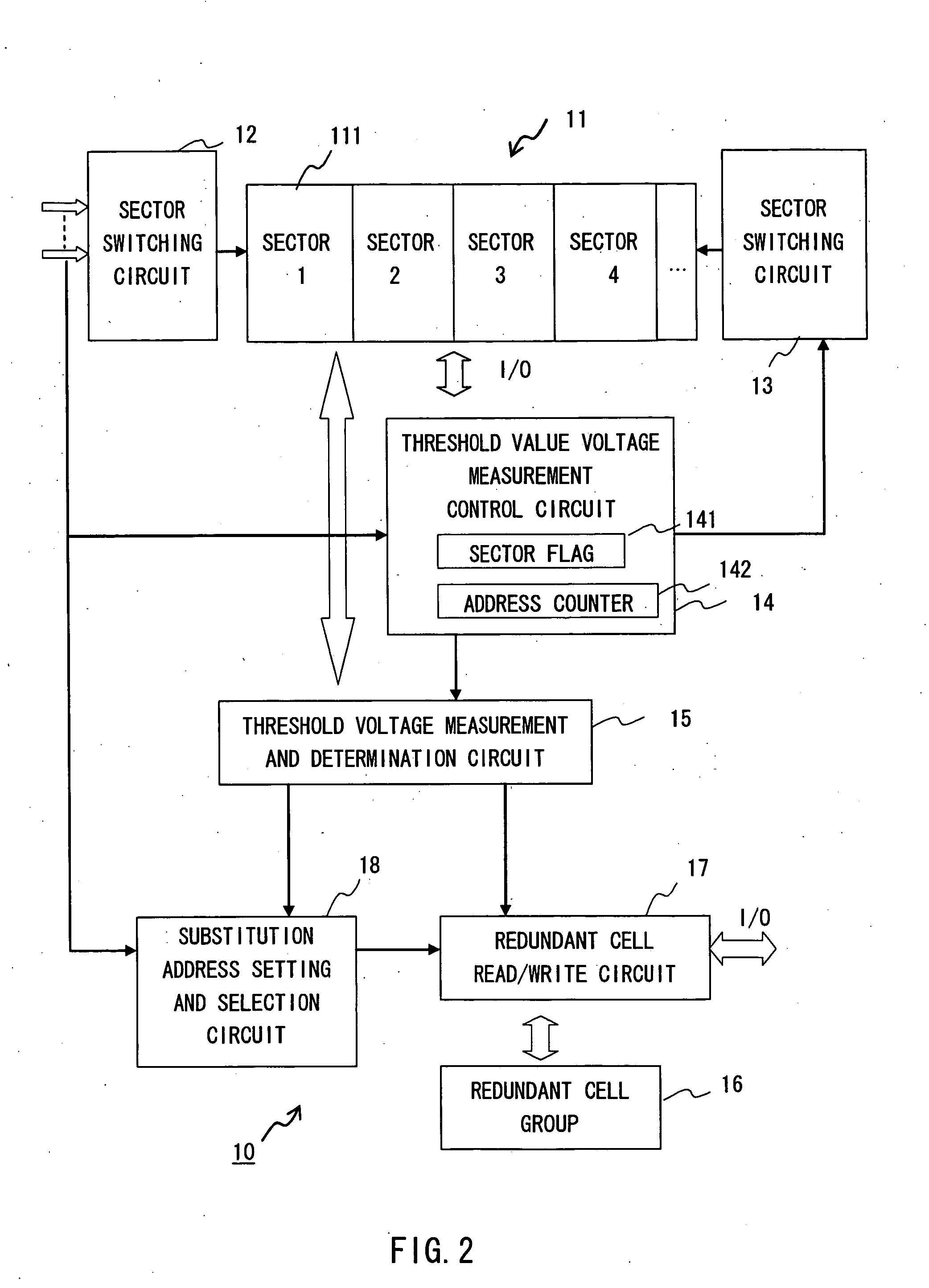Nonvolatile memory
a technology of nonvolatile memory and floating gate, applied in the field of nonvolatile memory, can solve the problems of software errors caused by the reduction in the number of electrons at the floating gate during use, and cannot be generally detected
- Summary
- Abstract
- Description
- Claims
- Application Information
AI Technical Summary
Benefits of technology
Problems solved by technology
Method used
Image
Examples
embodiment 1
[0032] With the flash memory of this embodiment, cells with defective charge retention are detected, and the defective cells or the data stored in the defective cells are rescued by storing data stored in the defective cells in redundant cells (reserved cells). First, the method of the present embodiment for determining retention defective cells will be described referring to FIGS. 1A-1B. Note, hereinafter, an example where four pieces of data are storted in each multi-value cell will be described. FIG. 1A shows a reference value (VTM(k)) for determining each logical value and a threshold value distribution (transistor threshold voltage) for a 4 value cell in a flash memory. FIG. 1B similarly shows a reference value (VTM(k)) for determining each logical value and a threshold value distribution for a 4 value cell in the flash memory of the present embodiment. The Y axis in each of the figures shows the cell threshold value, and the X axis shows the number of cells. The threshold valu...
embodiment 2
[0047]FIG. 3 shows another embodiment of the memory device of the present invention. In the above example, defective cell check and substitution was performed for each data writing cycle to the memory cell array 11. The memory cell is accessed during the defective cell check. Therefore, from the viewpoint of reducing the load on the memory cell and reducing power consumption, checking for defective cells at a specified interval is preferable. Memory device 20 of the present embodiment checks defective cells each time a designated number of reads or writes processes are performed. Therefore, additional load on the memory cell and additional power consumption can be limited while still performing the necessary defective cell rescues.
[0048] Memory device 20 comprises a command counter 21. The command counter 21 counts the number of read commands and write commands issued (number of command acquisitions) to the memory cell array 11. The counted data is input to the threshold voltage me...
embodiment 3
[0054] In the above embodiment, the defective cell check process is performed depending on the number of acquired commands. However, depending on the memory device, access to the memory cell array may be extremely limited. In these cases, a situation can be imagined where the memory cell array check is not carried out within the necessary time period. The memory device of this embodiment inspects the main cell array when the memory device is powered on or when the memory device is selected and activated by a control signal after it is turned on. Therefore, the memory cell threshold value can be prevented from changing to a different logical value range.
[0055] The memory device 25 comprises a power voltage detection circuit 26. The power voltage detection circuit 26 detects whether or not the power voltage of the memory device 25 is above a reference value, and if the power is detected to be ON, the threshold voltage measurement control circuit 14 will receive a control signal. If t...
PUM
 Login to View More
Login to View More Abstract
Description
Claims
Application Information
 Login to View More
Login to View More - R&D
- Intellectual Property
- Life Sciences
- Materials
- Tech Scout
- Unparalleled Data Quality
- Higher Quality Content
- 60% Fewer Hallucinations
Browse by: Latest US Patents, China's latest patents, Technical Efficacy Thesaurus, Application Domain, Technology Topic, Popular Technical Reports.
© 2025 PatSnap. All rights reserved.Legal|Privacy policy|Modern Slavery Act Transparency Statement|Sitemap|About US| Contact US: help@patsnap.com



